*Disclaimer: These home exercises are general advice only (unless specifically prescribed for you by our chiropractors); and these exercises don’t replace a consultation with your local health professional. If you’re concerned, if this aggravates anything, or you’re just unsure please discontinue and seek medical advice.
tmj
relief from jaw pain and tension with home exercises
Unlocking the Jaw: How Posture, Misalignment & Bruxism Contribute to TMJ Tension (And What You Can Do About It)
If you’ve ever caught yourself clenching your jaw at your desk or waking up with a sore face and stiff neck, you’re not alone. TMJ (temporomandibular joint) tension is a growing complaint among people dealing with stress, poor posture, and misaligned bite patterns. But there’s good news: identifying the root causes and integrating chiropractic and dental collaboration can help you find lasting relief.
TMJ Symptoms to Watch For:
TMJ dysfunction is often sneaky. You may not even notice it’s a problem until pain flares up. Common symptoms include:
• Clicking, popping, or locking of the jaw
• Pain while chewing or yawning
• Frequent headaches or migraines
• Neck and shoulder pain
• Worn down or chipped teeth
• Facial tenderness, especially around the jawline
• Cheek or lip biting during chewing or sleep
Exercises that might help TMJ:
TMJ Experts give some homecare exercises to help alleviate TMJ tension and pain.
1. Chin Tucks (for Forward Head Posture)
Purpose: Re-aligns head over shoulders, reduces strain on jaw and neck muscles.
How To:
1. Sit or stand tall against a wall with your shoulders relaxed.
2. Without tilting your head, gently pull your chin straight back like you’re making a double chin.
3. Hold the position for 5–10 seconds.
4. Repeat 10–15 times, 2–3 sets per day.
Common Mistake: Don’t tilt your head down—imagine sliding your head back on a shelf.
Pro Tip: Do this in front of a mirror to ensure your head stays level.
2. Controlled Jaw Opening with Tongue Posture
Purpose: Teaches proper jaw mechanics, decreases clenching habit, reduces clicking.
How To:
1. Sit upright. Place the tip of your tongue on the roof of your mouth, just behind your front teeth.
2. Keeping your tongue in place, slowly open your mouth as wide as you can without pain or clicking.
3. Hold open for 2 seconds, then slowly close.
4. Repeat 10 times, twice daily.
Progression: Use a mirror to check if your jaw tracks straight. If it shifts to one side, stop and reset.
3. Masseter & Temporal Muscle Self-Massage
Purpose: Releases tension in jaw-clenching muscles.
How To (Masseter):
1. Locate the muscle just in front of your ear (clench lightly to feel it).
2. Use two fingers to gently massage in small circles.
3. Continue for 1–2 minutes per side.
How To (Temporalis):
1. Place fingertips above your ears on the temples.
2. Massage gently in circles, focusing on tight areas.
3. Do this while breathing deeply.
Bonus Tip: Do this while applying moist heat (warm washcloth or heating pad).
4. Jaw Isometric Strengthening Exercise
Purpose: Improves stability and strength of the jaw muscles.
How To:
Place your thumb under your chin.
2. Gently try to open your jaw while resisting with your thumb. Don’t let your jaw move.
3. Hold for 5 seconds, relax.
4. Repeat with hand on the side of your jaw (left and right) to resist side-to-side motion.
5. Do each direction 5 times.
Important: No pain or popping—if you feel either, ease up or consult your provider.
5. Posture Reset Routine
Purpose: Maintains spinal alignment, reduces tension feeding into the jaw.
Routine:
1. Wall Angels:
Stand with your back, head, and butt against a wall. Raise arms to shoulder height and slide them up/down like snow angels. Repeat 10 times.
2. Shoulder Blade Squeeze:
Sit or stand tall. Squeeze shoulder blades together without shrugging.
Hold 5 seconds, repeat 10 times.
3. Neck Rolls & Side Stretch:
Gently roll your neck side to side, then stretch each side for 20 seconds.
4. Roam Roller Spinal Release (Thoracic Extension):
EASY! A 90cm length foam roller is probably best for this (diameter doesnt matter). Lie on top of the foam roller for 10mins per day. i.e spine parallel to the roller.
Alternative: roll a towel to diameter ~10cm. Lie on top of it length ways between your shoulder blades. 10min duration daily.
6. Diaphragmatic Breathing for Stress & Clenching
Purpose: Reduces nervous system tension contributing to bruxism.
How To:
1. Lie down or sit upright. Place one hand on your chest, one on your belly.
2. Inhale through your nose for 4 seconds, expanding your belly—not your chest.
3. Exhale slowly through your mouth for 6–8 seconds.
4. Repeat for 2–3 minutes, multiple times a day.
Why It Works: Stress activates jaw-clenching reflexes. Deep breathing helps deactivate this loop.
——-
Want to learn more?
Struggling to resolve your TMJ / Jaw dysfunction? Get in touch! Our team of experts are ready to help unravel the root cause of your jaw issues when you are.
For symptom relief of your jaw pain and tension and to resolve the underlying cause book an Initial Consultation in Mosman with Nomad Chiropractors.


